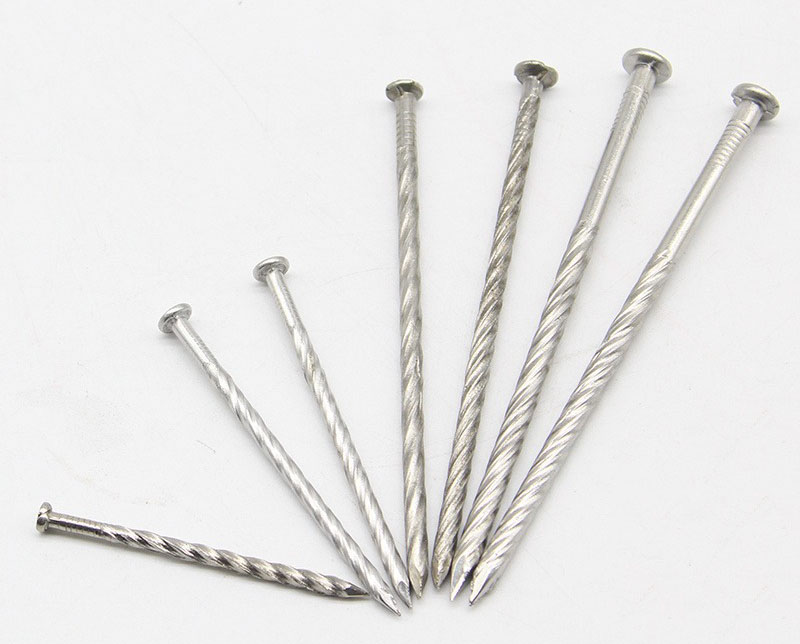Threaded Nails: A Tiny Force in the Era of Fastening, Crafted in Millimeters

In the grand landscape of industrial civilization, there is a component that, with its minuscule form, connects countless magnificent creations—this is the threaded nail. From the reinforcement connections in skyscrapers to the component interlocking in precision instruments, threaded nails, like a set of silent genes, write a story about strength, precision, and inheritance in the proposition of "fastening".
The core wisdom of a threaded nail lies in the spiral lines that rise in a helix. This is not a simple line but an industrial interpretation of Archimedes' spiral principle. When a threaded nail is screwed into a substrate, the engagement between the thread and the material forms a "self-locking" connection: each turn of the thread is a mechanical barrier, converting axial force into radial biting force. Even under continuous impact of vibration and shear force, it can keep the connection as firm as a rock.
Compared with traditional round nails, the advantages of threaded nails are revolutionary. Ordinary round nails rely on "extrusion force" to maintain the connection and are prone to loosening due to material creep or external forces; while the thread engagement of threaded nails is "embedded", forming a "you-in-me" structure with the substrate. The fastening force continues to increase with the screwing depth. This is why threaded nails can replace round nails as the first choice in building formwork and heavy furniture.
A high-quality threaded nail is born from the dual polishing of materials and craftsmanship.
Material Matrix: Carbon steel is a cost-effective choice. After heat treatment, its hardness can reach above grade 8.8, and it is widely used in construction and general machinery. Stainless steel (such as 304 and 316 series) has become the "standard" in marine engineering and medical equipment due to its excellent acid and alkali resistance and corrosion resistance. Alloy steel threaded nails have emerged in the aerospace field, with ultra-high strength to withstand extreme loads.
Craftsmanship Code: From the cold heading of wire rods to form the head, to the precision control during thread rolling (thread tolerance can reach ±0.02mm), and then to surface treatments such as galvanizing and blackening (which can extend the rust-proof life by 5-10 times), every process strives for excellence in millimeters. Take thread rolling as an example. It forms threads through metal plastic deformation. Compared with cutting technology, it not only retains the continuity of the material but also improves the thread strength. This is the industrial pursuit of "precision" to the extreme.
The application of threaded nails has long gone beyond the basic function of "connection" and has become a synonym for "reliability" in different fields.
Construction: In the wooden formwork system, threaded nails firmly fix the multi-layer boards and wood squares. Even after the impact and vibration of concrete pouring, they can ensure that the formwork system does not deform, ensuring the accuracy of the building.
Furniture Manufacturing: In the hardware connection of custom furniture, the "micro-adjustment" attribute of threaded nails is fully demonstrated. Through subtle adjustments to the screwing depth, the door panels and drawers can be perfectly aligned.
Mechanical Assembly: In the connection of core components of small agricultural machinery and electric tools, the high torque-bearing capacity of threaded nails allows the equipment to maintain structural stability during long-term operation and reduce failures caused by loosening.
Even in art installations, threaded nails appear with an "industrial aesthetic"—artists use them as constituent elements, with dense arrangements or special combinations, to show the coldness and order of mechanical civilization.
From the rough threads forged by hand to the precision tooth profiles produced by numerical control equipment; from a single carbon steel material to the innovative applications of titanium alloys and composite materials, the evolution of threaded nails is a microcosm of the progress of industrial civilization. It has witnessed the rise of standardized production (such as the global popularization of ISO thread standards) and also participated in the practice of green manufacturing (the promotion of environmentally friendly surface treatment technologies).
In this era of pursuing "big and strong", threaded nails interpret another value logic with their "small and precise" characteristics: the smaller the part, the more extreme precision is required; the more inconspicuous the existence, the more it supports the grand system. When we overlook the city in a skyscraper and explore the unknown in front of precision instruments, we might as well pay attention to those threaded nails hidden deep in the structure—with their millimetric bodies, they fasten the path of the era's progress.
![]() 中文
中文

